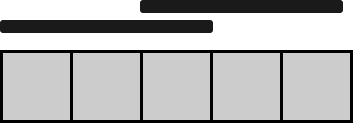Problem
You are given a 0-indexed binary string floor, which represents the colors of tiles on a floor:
floor[i] = '0'denotes that theiᵗʰtile of the floor is colored black.- On the other hand,
floor[i] = '1'denotes that theiᵗʰtile of the floor is colored white.
You are also given numCarpets and carpetLen. You have numCarpets black carpets, each of length carpetLen tiles. Cover the tiles with the given carpets such that the number of white tiles still visible is minimum. Carpets may overlap one another.
Return the minimum number of white tiles still visible.
https://leetcode.cn/problems/minimum-white-tiles-after-covering-with-carpets/
Example 1:

Input:
floor = "10110101", numCarpets = 2, carpetLen = 2
Output:2
Explanation:
The figure above shows one way of covering the tiles with the carpets such that only 2 white tiles are visible.
No other way of covering the tiles with the carpets can leave less than 2 white tiles visible.
Example 2:

Input:
floor = "11111", numCarpets = 2, carpetLen = 3
Output:0
Explanation:
The figure above shows one way of covering the tiles with the carpets such that no white tiles are visible.
Note that the carpets are able to overlap one another.
Constraints:
1 <= carpetLen <= floor.length <= 1000floor[i]is either'0'or'1'.1 <= numCarpets <= 1000
Test Cases
1 | class Solution: |
1 | import pytest |
Thoughts
定义 dp(i, j) 表示用 j 块地毯覆盖地板的区间 [0, i],无法被覆盖的白色砖块的最少数量。显然题目所求即为 dp(n-1, m)(n 表示砖块的数量,m 表示地毯的数量)。
可以先对 floor 字符串做个预处理,定义 floors[i] 为 1(数字)表示白砖,0 表示黑砖:
对于 dp(i, j),一个选择是不覆盖砖块 i,那么未覆盖的白砖数量为 dp(i - 1, j) + floors[i];另一个选择是用一块地毯沿着砖块 i 的右侧边铺放,它能覆盖区间 (i - l, i](其中 l = carpetLen)的砖块,然后用剩余的 j - 1 块地毯覆盖区间 [0, i - l] 的砖块,总共覆盖不到的白砖数量为 dp(i - l, j - 1)。这两个选择下取较小的,即为 dp(i, j) 的值。
为了便于处理边界值,可以定义 dp(i, -1) = ∞,这样可以用同一个式子表达 dp(i, 0) 的计算逻辑。
一个平凡的情况是当 i < j * l 时,显然 dp(i, j) = 0。
所以 dp(i, j) 的状态转移公式为:
从 0 到 m 递增 j,对于每个 j,从 j * l 开始递增到 n - 1 计算 dp 值。只需要保留 j - 1 和 j 的两组 dp 值。
时间复杂度 O(m * n),空间复杂度 O(n)。
Code
1 | from itertools import accumulate |